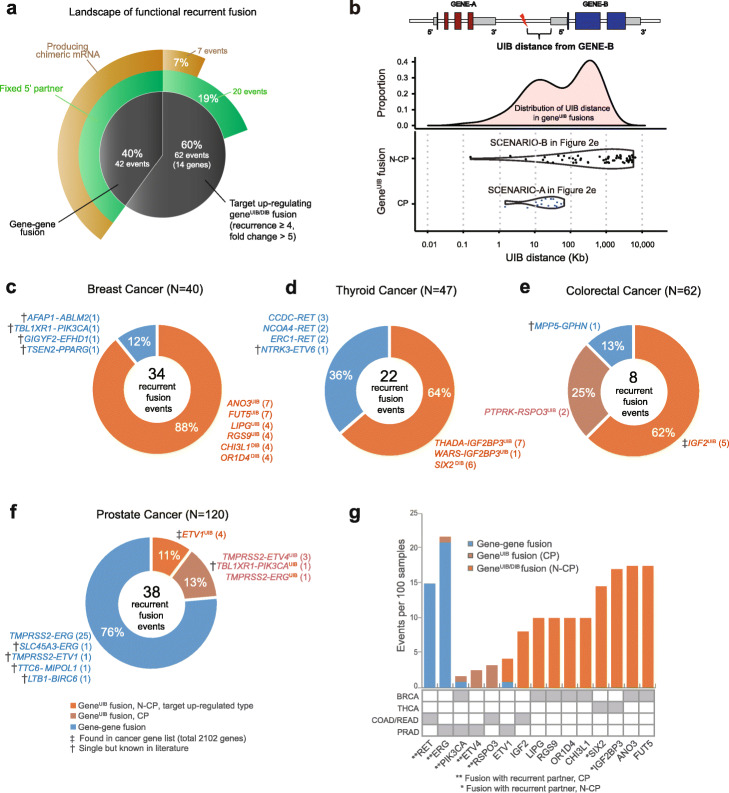Fig. 5.
Contribution of recurrent UIB fusions in four tumor types. a Proportion of each type of functional recurrent fusions in 268 TCGA samples. Among the target upregulating geneUIB fusions, 32% (20 events, 19% of the total events) had fixed 5′ partners, and 11% (7 events, 7% of the total events) produced chimeric mRNA. b The distribution of the distances between the upstream intergenic breakpoints and their target genes. Breakpoints of the fusions that produce chimeric mRNAs (8 recurrent and 9 single cases) are much closer to the target gene (mean, 25 kb; maximum, 64 kb) than in the non-chimeric-producing (N-CP) cases (mean, 1.15 Mb; maximum, 3.7 Mb). Ninety-nine percent of introns are < 100 kb. c–f Recurrent fusions in BRCA (N = 40), THCA (N = 47), COAD/READ (N = 61), and PRAD (N = 120). Genes annotated as cancer-related and singletons in our data but involve a known oncogene are marked with a dagger. g Frequency of fusion events per 100 samples and preference for gene-gene vs geneUIB fusions. Fifteen target cancer genes involved in at least two fusion events are shown. Some are chimeric-producing while others are not

